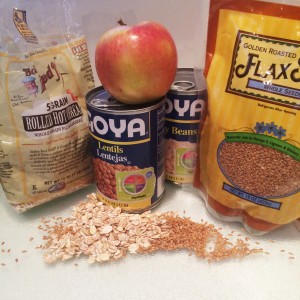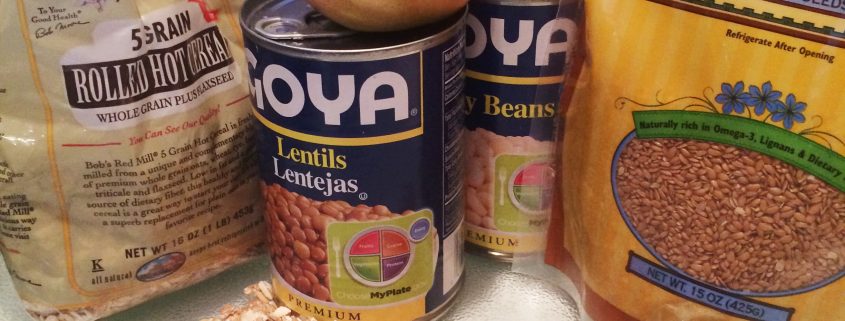Put the Focus on Fiber
 January is National Fiber Focus Month!
January is National Fiber Focus Month!
I can’t think of a better way to start the New Year than to learn about the benefits of fiber and how you can increase your daily intake.
To start, what is fiber?
It is a form of carbohydrate which, unlike other carbohydrates you’re familiar with, cannot be broken down into energy for the body. Instead fiber helps regulate bowel movements, decrease blood glucose and cholesterol, and increase satiety, thus playing a role in weight management.
There are two types of fiber which act differently in the intestinal tract.
Soluble fiber is dissolvable in water which means it can hold water during digestion. This type of fiber helps increase the feeling of being full and slows digestion, keeping you feeling full longer. This also helps manage blood glucose levels by slowing the absorption of sugar, which can be beneficial to those with diabetes. Soluble fiber can be found in whole oats, nuts, beans, lentils, and fruits such as apples and citrus fruits.
Insoluble fiber does not dissolve in water and will increase the speed at which foods pass through the gastrointestinal tract, and adds bulk to stool in the intestines. This gives fiber the reputation of promoting regularity. Insoluble fiber can be found in whole grains, legumes, and vegetables such as carrots and tomatoes. In just a bit I will explain why whole grains contain more fiber than refined or “white” grains.
Let’s go over how much fiber is recommended versus how much the average adult consumes.
Adult women should be consuming around 25 grams of dietary fiber per day while men should be consuming about 38 grams per day. On average, adults only consume about 50% of their recommended intake. This is likely due to a diet which includes more refined grains versus whole grains and decreased intake of whole fruits and vegetables, legumes, and beans.
Here are some easy ways you can increase your daily dietary intake of fiber:
– Choose whole grains over refined grains whenever possible. A whole grain is composed of 3 parts: the endosperm, bran, and germ. During the refining process which is used in making white breads and rice, the bran and germ of the grain are removed, leaving just the endosperm. The bran is the fibrous outer layer of the grain. This portion alone can contain nearly 10 times more fiber than the endosperm.
– Choose whole fruits and vegetables over juiced options. Most of the fiber is lost once fruits and vegetables are sent through a juicer. To go along with this concept, leave the skin of your fruits and vegetables on to increase the fiber contents but of course wash them well.
– Increase your intake of beans, nuts, and legumes. In addition to fiber, beans provide protein, vitamins, and minerals to your daily intake! January 6th is National Bean Day so it’s a great day to introduce beans into your menus.
Your turn to take action: Set a goal for yourself to include more fiber into your daily meals, then let me know by commenting below.


Leave a Reply
Want to join the discussion?Feel free to contribute!